
Understanding HpLV In Cannabis: Risks And Precautions
Hop latent viroid is very difficult to detect, and it can significantly reduce yields and cannabinoid content in cannabis crops. What is it, what can you do about it, and is it really all that damaging to a home cannabis grow?
Infestations can be frustrating, or downright traumatic, when growing cannabis. It can be troubling to find colonies of insects or fungi making a home out of your crop. But we rarely consider the possibility of microscopic infections, such as viruses and viroids.
In this article, we’ll explore the hop latent viroid, a pathogen that has spread to cannabis plants. What is it, how does it impact marijuana plants, and is it all that bad?
What is hop latent viroid?
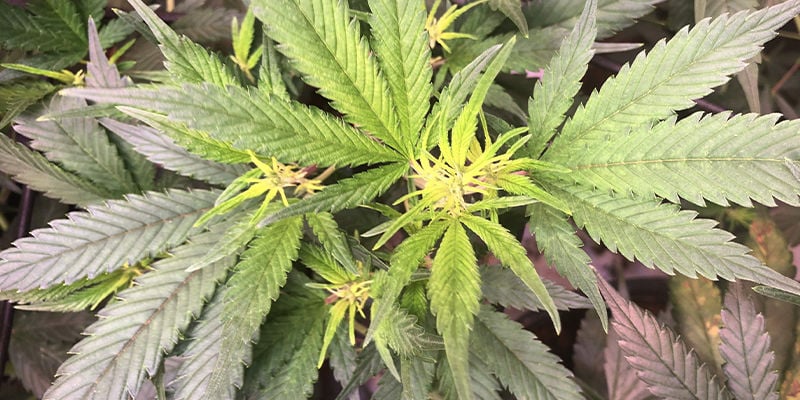
Hop latent viroid (HpLV) is a microscopic organism that primarily affects hops plants, but it can also affect cannabis too. A viroid is similar to a virus, but even more simple. It consists of one sole RNA chain, without any proteins. This is about as simple as an organism gets—and there’s ongoing debate about whether they even count as living.
A viroid infects hosts and replicates in the cell nuclei. RNA codes for DNA and genetic expression, so once this strand of RNA gets inside a host cell, it can essentially reprogramme the DNA so that the cell now becomes, in this case, an HpLV factory too.
When we say that HpLV is microscopic, we’re not just saying that it’s very small; rather, it’s minute—impossible to see without a powerful microscope. Taking a look at your plant with a pocket microscope isn’t going to reveal anything. This viroid is a mere 40 nanometres long. To compare, that’s 40 billionths of a metre (0.0000000040m). The most effective way to know for sure if HpLV is in your plants is with a PCR test—which isn't readily available.
For commercial growers in North America, HpLV is thought to be a significant issue. One piece of research suggests that up to 90% of cannabis plants in California may be infected with this viroid (Sandy, 2021), and another found that 40% of Canadian samples contained this organism (Lange, 2023).
But what are the symptoms, and is it a big issue?
What are the symptoms of HpLV in cannabis?
The symptoms of an HpLV infection in cannabis are not obvious, and much of the time they hardly show themselves at all. There are certainly no telltale signs that will immediately indicate your plants are infected.
Propagation stage
If clones are taken from mothers infected with HpLV, root development will be significantly reduced compared to healthy plants; growth will be slower, and the root system will never develop to the size it should. These effects will go on to affect the overall growth of the plant, resulting in an adult plant that is smaller and less productive than you would expect.
What’s more, this stunted root development at such a young stage makes plants more susceptible to pathogens that target the root zone, which means HpLV can open the door for even more serious infections.
Vegetative stage
If a plant becomes infected during the vegetative stage, you might notice significant stunting of growth. The symptoms could include:
- Reduced lateral growth
- Brittle stems
- Smaller, narrower leaves
- Leaf discolouration
- Unusually short internodes
- A scent similar to composting leaves
It is worth noting that all of these symptoms do not always appear. In fact, symptoms may not become apparent at all until the plant enters the flowering stage. This can be problematic for several reasons. To start, it means growers may take clones from what appears to be a totally healthy mother plant, which is in fact infected. Realistically, outside of large, commercial growing operations, there’s nothing the average home-grower can do about this, other than take steps to avoid infecting mother plants in the first place.
Flowering stage
HpLV infections are most apparent during the flowering stage. Though researchers are unsure why, the viroid concentration is at its highest during this stage of the plant's development.
Symptoms include:
- Smaller overall growth
- Discoloured leaves
- Smaller buds than unexpected
- Less trichome development than expected
The harvested buds of infected plants are believed to exhibit up to 50% less cannabinoids than a healthy specimen of the same phenotype, grown under the same conditions. So not only does this viroid affect the macro growth of a plant, including yield, but it also dramatically reduces the final quality of the bud you harvest.
How does hop latent viroid spread?
There are a few ways that HpLV can spread. In this section, we’ll outline those, and in the following section we’ll explain how you can avoid them.
If a plant becomes infected during its life cycle, as opposed to beginning its life with the infection, then the viroid enters through the phloem and takes six weeks to infect the entire plant. Within two weeks it is detectable in the plant’s roots; within four weeks it is detectable in all new growth, and within six weeks it can be found throughout the entire plant.
Direct contact
The most common way plants are infected with HpLV is through direct contact, either with other infected plants or with tools/hands that have been in contact with infected plants.
For instance, if you have a dense grow with many plants touching one another, this will increase the chances of an infected plant passing the viroid on to its companion. Alternatively, if you prune an infected plant with tools and then don’t clean them before pruning the next plant, there is a high chance that you’ll infect that second plant, and others you prune after that. The same goes for hands/gloves.
Via roots
Concentration of HpLV is highest in the roots of cannabis plants. If you’re growing in pots, in soil, then this isn’t an issue. However, if you’re growing multiple plants in a hydroponic setup, then this virus can spread through the water in the reservoir.
It’s also possible that multiple plants together in a single soil bed could transmit the viroid through subterranean root contact.
Through breeding
It has been shown that the infection can be passed from parents to seeds, and this seems to be the case if either the male or the female is infected—or both. Tests have shown that the infection can be found both on the seed casing and inside the seed. If undetected, HpLV could potentially be passed down many generations of cannabis plants through breeding, even if very high levels of hygiene are observed.
How to prevent HpLV in cannabis
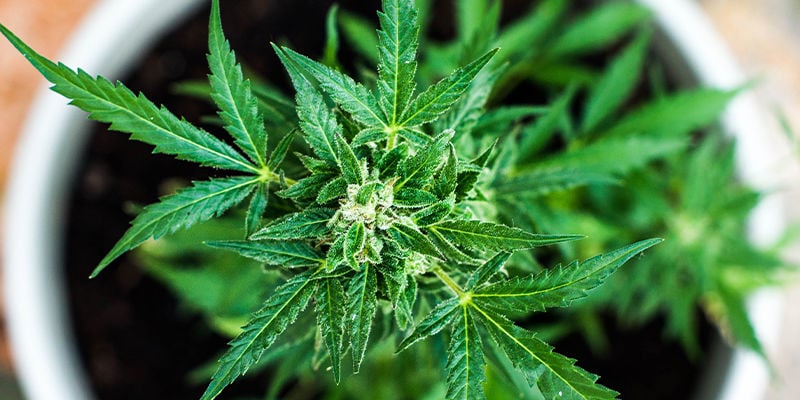
Preventing HpLV is very difficult, especially as it can be so difficult to spot in the first place. Still, there are some precautions we can take.
Primarily, practising good hygiene will greatly reduce the chances of passing the infection from one plant to another. Always clean tools and hands after contact with one plant, even if you don’t suspect it to be infected. This will reduce not only the spread of HpLV, but all manner of other pathogens too.
The viroid can survive for up to five days on surfaces, and on dry leaves for up to four weeks. This makes it surprisingly stable and gives it good longevity, which poses extra problems.
If you notice a plant is growing very stunted, it might be worth removing it from your grow. Chances are, you won’t conduct a PCR test to prove if it has HpLV, but no matter. A plant that is stunted probably has some kind of infection (once you've ruled out pH and feeding issues), and so removing it from your grow is a worthwhile precaution even if you don’t know exactly what’s wrong with it.
Finally, don’t breed or take clones from plants you suspect to be infected, as this might pass it on to later generations.
Are certain cultivars resistant to HpLV?
It seems so. Research has shown that Jamaican Lion plants infected with this viroid are still able to develop normally, even when it can be found throughout the entire plant. Yield quantity and quality appear to be unaffected.
It’s likely that other cultivars are also resistant—though which ones, exactly, is currently unknown. However, it seems that if this viroid does become a huge problem for global cannabis production, plants could be bred to demonstrate resistance to its negative effects.
How to treat HpLV in cannabis plants
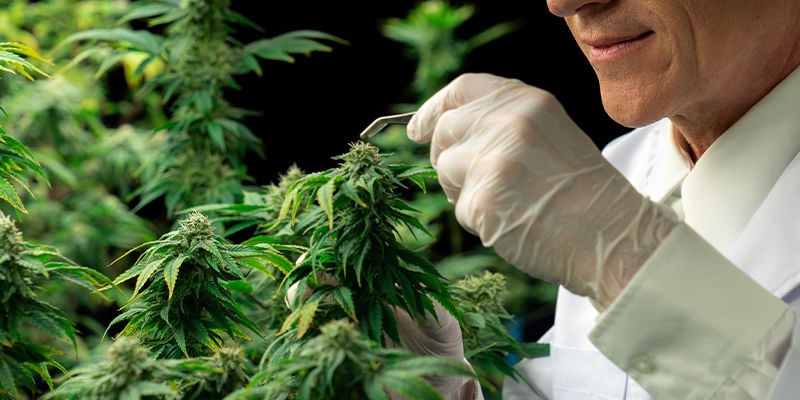
You can’t really. Heat therapy has been shown to be ineffective, and cold therapy is unproven. What’s more, you cannot disinfect infected tissue—once it’s in, the viroid is there to stay.
So really, the best way to treat it is through prevention, and the removal of infected plants. For home growers, the problem is unlikely to persist past a single grow, and so it’s something that might just happen from time to time. However, for commercial growers and breeders, it can pose more of a substantial issue.
Risks of consuming cannabis with HpLV
None! The good news is that HpLV is not thought to have any adverse effects on humans when consumed, regardless of the consumption method. So you needn’t worry about inadvertently consuming tainted buds.
While it might pose a risk to your plants and yield, it doesn’t pose a health risk to you or anyone else who might use your cannabis.
HpLV: Insidious and hard to treat
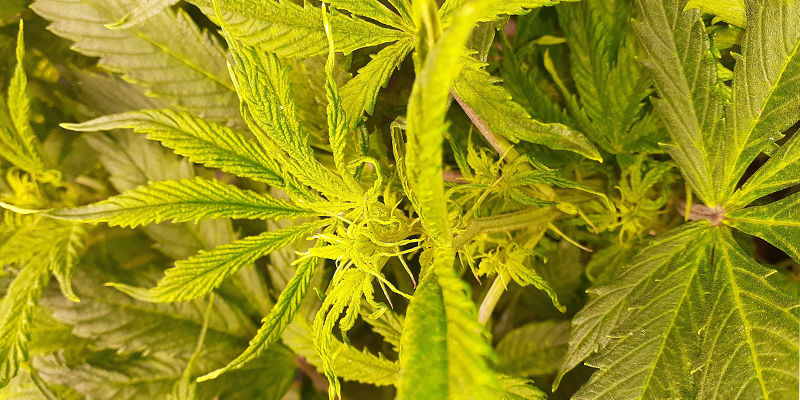
This viroid is poorly understood, and the risk it poses to grows, especially home grows, is unknown. For the casual grower, it’s perhaps not worth concerning yourself over that much, especially as it doesn’t pose a health risk to humans.
As you can probably see, detecting it is very difficult, and treating it once it’s appeared is essentially impossible, so it’s not worth stressing over. The best precaution you can take is to buy seeds from quality seed banks—which will defend you against all manner of pathogens.
- Lange. (2023). Authorization of Hemp as Commercial Animal Feed Unlocks New Markets for Montana Farmers - https://www.cannabisbusinesstimes.com
- Sandy. (2021). Dark Heart Nursery Research Finds 90% of California Facilities Test Positive for Hop Latent Viroid - https://www.cannabisbusinesstimes.com
-
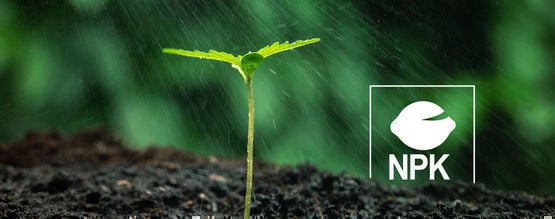 7 min
14 July 2022
How To Feed Cannabis Plants Nutrients
A healthy cannabis plant requires a pretty strict diet. Think of it a bit like a top-level athlete, and yourself as their nutritionist. Optimising food intake is key to getting the best results....
7 min
14 July 2022
How To Feed Cannabis Plants Nutrients
A healthy cannabis plant requires a pretty strict diet. Think of it a bit like a top-level athlete, and yourself as their nutritionist. Optimising food intake is key to getting the best results....
-
 9 min
16 June 2022
How To Treat And Avoid Yellow Cannabis Leaves
The sight of a luscious and thriving cannabis plant is enough to bring a smile to the face of any grower. Therefore, spotting yellow leaves is a cause for concern. But worry not, here are a few...
9 min
16 June 2022
How To Treat And Avoid Yellow Cannabis Leaves
The sight of a luscious and thriving cannabis plant is enough to bring a smile to the face of any grower. Therefore, spotting yellow leaves is a cause for concern. But worry not, here are a few...
-
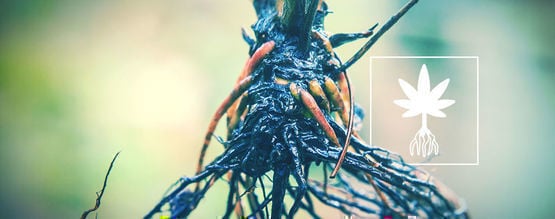 4 min
31 January 2022
How To Identify And Fix Cannabis Root Rot
We all want a smooth ride when cultivating cannabis, but sometimes problems can arise. Whether that's the presence of pests or mould, most can be fixed and/or prevented. However, one such issue...
4 min
31 January 2022
How To Identify And Fix Cannabis Root Rot
We all want a smooth ride when cultivating cannabis, but sometimes problems can arise. Whether that's the presence of pests or mould, most can be fixed and/or prevented. However, one such issue...
-
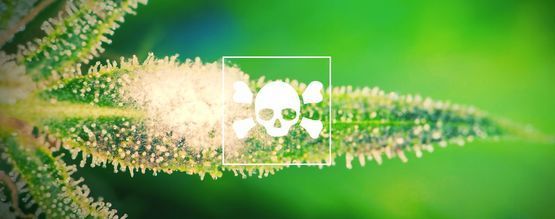 9 min
13 June 2019
How To Identify And Treat Sick Cannabis Plants
Your cannabis plants can’t tell you what’s wrong with them. However, they will express symptoms. It’s the grower’s responsibility to accurately diagnose and apply treatment. This can only be...
9 min
13 June 2019
How To Identify And Treat Sick Cannabis Plants
Your cannabis plants can’t tell you what’s wrong with them. However, they will express symptoms. It’s the grower’s responsibility to accurately diagnose and apply treatment. This can only be...












 United States
United States










